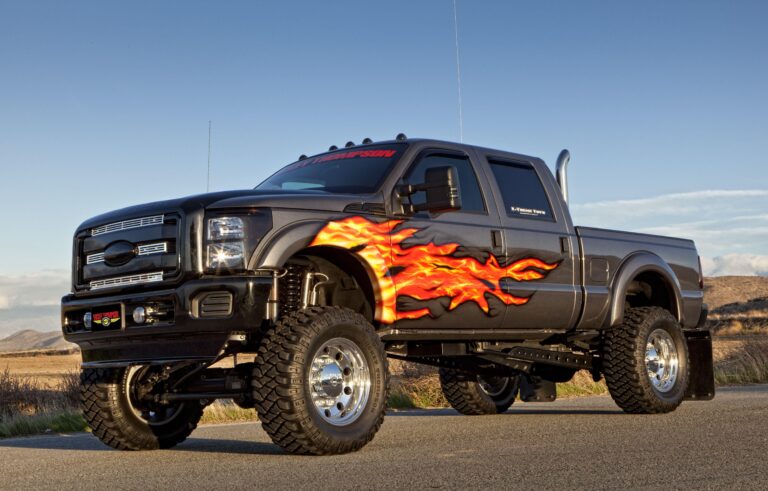Base Model Work Trucks For Sale: Your Ultimate Guide to Unbeatable Value and Unyielding Performance
Base Model Work Trucks For Sale: Your Ultimate Guide to Unbeatable Value and Unyielding Performance cars.truckstrend.com
In the world of commercial vehicles, where functionality often trumps flash, the base model work truck stands as a testament to practical engineering and financial prudence. Far from being "stripped down" in a negative sense, these trucks are purpose-built machines designed to tackle the toughest jobs without unnecessary frills or exorbitant price tags. For small businesses, independent contractors, fleet managers, or even individuals who simply need a reliable workhorse, understanding the landscape of base model work trucks for sale is crucial for making an informed and cost-effective decision.
This comprehensive guide will delve into what defines these utilitarian vehicles, why they offer undeniable advantages, what to consider before purchasing, and how to navigate the market to find your perfect fit.
Base Model Work Trucks For Sale: Your Ultimate Guide to Unbeatable Value and Unyielding Performance
What Exactly is a Base Model Work Truck?
A base model work truck, often designated by trims like "XL" (Ford), "WT" (Work Truck – Chevrolet/GMC), or "Tradesman" (Ram), represents the entry-level offering in a manufacturer’s pickup truck lineup. Unlike their higher-trim counterparts adorned with leather seats, large infotainment screens, and chrome accents, base models prioritize durability, utility, and affordability.
Key characteristics often include:
- Minimalist Interior: Expect durable vinyl or cloth seats, rubberized floor mats, manual windows and locks (though power options are increasingly standard), and a basic AM/FM radio, often without a touchscreen.
- Standard Powertrains: These trucks typically come with the manufacturer’s entry-level engine, often a robust V6 or a smaller, efficient V8, paired with a reliable automatic transmission. They are designed for towing and hauling, not racing.
- Essential Safety Features: Modern base models will include mandatory safety features like airbags, ABS, and stability control, but advanced driver-assist systems (ADAS) like adaptive cruise control or lane-keeping assist are usually optional or absent.
- No-Frills Exterior: Steel wheels, black grilles, and minimal chrome are common. The focus is on function over aesthetics.
- Robust Construction: Despite the lack of luxury, the underlying chassis, frame, and suspension components are often identical to higher trims, built to withstand the rigors of commercial use.

Why Choose a Base Model Work Truck? The Undeniable Advantages
The appeal of a base model work truck extends far beyond its lower sticker price. These vehicles offer a suite of benefits that make them the smart choice for a specific kind of buyer.
1. Unbeatable Cost Savings

This is perhaps the most obvious advantage. A base model can be tens of thousands of dollars cheaper than a fully loaded equivalent. This significant initial saving translates into:
- Lower Monthly Payments: For financed purchases.
- Reduced Insurance Premiums: Often, simpler vehicles with fewer expensive components cost less to insure.
- Potentially Lower Depreciation: While all vehicles depreciate, base models often hold a higher percentage of their value in the commercial resale market due to their enduring utility.

2. Reliability & Durability
Less complexity often means fewer things to break. With fewer electronic gadgets, power features, and intricate systems, base models are inherently simpler machines. This simplicity often translates to:
- Fewer Potential Failure Points: Less sophisticated electronics mean less chance of costly sensor or module failures.
- Ease of Maintenance and Repair: Many repairs are straightforward, and parts are generally less expensive and more readily available.
- Built for Abuse: These trucks are designed from the ground up to be workhorses, not show ponies. Their materials and construction are chosen for longevity and resilience.
3. Ease of Customization and Upfitting
For many businesses, a truck is a platform. Base models are the ultimate blank canvas. Without expensive, integrated features to worry about, it’s easier and often cheaper to:
- Install Aftermarket Equipment: From utility bodies, ladder racks, and toolboxes to plows and service caps, base models are ideal for specialized upfits.
- Add Essential Comforts: Want a better radio or Bluetooth? These can be added aftermarket without tearing out a complex factory system.
- Personalize for Specific Jobs: Tailor the truck precisely to your trade without paying for features you’ll remove or never use.
4. Lower Operating Costs
Beyond the purchase price, base models can save you money throughout their operational life:
- Potentially Better Fuel Economy: Lighter curb weight (due to fewer features) and often less powerful, but more efficient, standard engines can result in better MPG.
- Simpler Repairs: As mentioned, less complex systems mean less expensive labor and parts for routine maintenance and unforeseen repairs.
Key Considerations When Buying a Base Model Work Truck
While simplicity is a virtue, it’s crucial to ensure the base model still meets your core operational requirements.
1. Payload and Towing Capacity
These are non-negotiable for a work truck. Don’t compromise here to save a few dollars. Carefully assess:
- Gross Vehicle Weight Rating (GVWR): The maximum loaded weight of the truck itself.
- Payload Capacity: How much weight (passengers, cargo, tools, equipment) the truck can carry in its bed and cab.
- Towing Capacity: How much weight the truck can safely pull. Ensure the base engine and axle ratio can handle your typical load.
2. Cab Configuration and Bed Length
Your crew size and the nature of your cargo will dictate these choices:
- Regular Cab (2-door): Maximum bed length, lowest cost, seating for 2-3. Ideal for single operators or small crews needing maximum cargo space.
- Extended Cab/Quad Cab (2 small rear doors): Limited rear seating/storage, often a standard or long bed. A good compromise for occasional extra passengers or secure interior storage.
- Crew Cab (4 full-size doors): Most passenger room, often comes with shorter bed options. Necessary for larger crews or families.
3. Powertrain Configuration
- Engine: Consider the standard V6 or smaller V8. Is it powerful enough for your heaviest loads and terrains?
- Transmission: Most are automatic now, but some base models might offer a manual.
- 2WD vs. 4WD: If you operate on unpaved job sites, in snow, or off-road, 4WD is essential. Otherwise, 2WD offers better fuel economy and lower cost.
4. Essential Features You Might Still Need
Even a base model shouldn’t be entirely devoid of comfort or convenience:
- Air Conditioning (AC): A must for productivity in many climates.
- Cruise Control: Important for long highway drives.
- Basic Radio with Bluetooth: For communication and safety.
- Backup Camera: Increasingly standard and critical for safety, especially with large loads.
- Integrated Trailer Brake Controller: If you’ll be towing heavy trailers.
5. New vs. Used Base Model
- New: Full warranty, latest features (even base models evolve), customization options, often better financing.
- Used: Significant cost savings, wider selection of specific configurations, immediate availability. However, requires thorough inspection and history checks.
Finding Your Ideal Base Model Work Truck: Where to Look
The market for base model work trucks is robust, offering several avenues for purchase.
- Dealerships (New & Used): Authorized dealers offer new models, often with fleet sales departments that understand commercial needs. They also have certified pre-owned (CPO) options.
- Used Car Lots: Independent dealerships and used car superstores offer a vast inventory of used base models from various brands and years.
- Online Marketplaces: Websites like Autotrader, Cars.com, eBay Motors, and local classifieds (Craigslist, Facebook Marketplace) allow you to search by specific criteria and compare options from private sellers and dealers nationwide.
- Fleet Auctions: Government, utility, and rental company auctions are excellent sources for ex-fleet base models. These can offer significant savings but require careful inspection as vehicles may have high mileage or visible wear.
Tips for Buying a Base Model Work Truck
- Define Your Needs Precisely: Before looking, list your absolute requirements for payload, towing, cab size, bed length, and essential features.
- Set a Realistic Budget: Include not just the purchase price, but also taxes, registration, insurance, and any immediate upfit costs.
- Inspect Thoroughly (Especially Used): Look for rust (especially on the frame and undercarriage), signs of accidents, excessive wear in the interior, and listen for unusual engine or transmission noises. Consider a pre-purchase inspection by an independent mechanic.
- Check Vehicle History Report (Used): Services like CarFax or AutoCheck provide invaluable information on accidents, service history, odometer readings, and ownership.
- Negotiate: Always be prepared to negotiate the price. Dealerships often have more flexibility on base models due to higher sales volumes.
- Consider Fleet Incentives: If you’re buying multiple trucks for a business, inquire about fleet discounts or programs.
Potential Challenges and Solutions
- Lack of Comfort/Tech:
- Challenge: The interior can feel sparse, lacking modern conveniences like large touchscreens, premium audio, or comfortable seating.
- Solution: Remember its purpose. For essential tech, consider aftermarket stereo upgrades with Bluetooth and USB. Seat covers and quality floor mats can protect the interior and add a touch of personal comfort.
- Limited Availability of Specific Configurations:
- Challenge: While common, finding a very specific base model configuration (e.g., Regular Cab, long bed, 4WD, manual transmission) might require a broader search or a factory order for new vehicles.
- Solution: Be flexible with minor features, expand your search radius, or be prepared to wait if ordering new.
- Higher Mileage on Used Models:
- Challenge: Used work trucks, by nature, often have higher mileage due to their intended use.
- Solution: Focus on consistent maintenance records. A well-maintained high-mileage truck is often a better buy than a lower-mileage one with a spotty history. Prioritize professional inspections.
Base Model Work Trucks: Representative Pricing Guide (Estimated Ranges)
Please note: Prices are highly variable based on location, condition, mileage (for used), specific options, and market demand. These are general estimates for illustrative purposes only.
| Make/Model | Typical New Base MSRP Range | Typical Used Base Price Range (3-5 yrs old) | Key Base Features (Typical) | Why Choose a Base Model? |
|---|---|---|---|---|
| Ford F-150 XL | $36,000 – $45,000 | $20,000 – $35,000 | V6 engine, vinyl/cloth seats, basic audio, steel wheels | Durability, strong aftermarket support, excellent payload. |
| Chevy Silverado 1500 WT | $37,000 – $46,000 | $21,000 – $36,000 | V6/V8 engine, vinyl/cloth, basic infotainment, rubber floor | Robust construction, strong towing capabilities, simple. |
| Ram 1500 Tradesman | $37,000 – $47,000 | $22,000 – $37,000 | V6/V8 engine, vinyl/cloth, Uconnect (basic), steel wheels | Often offers good value, comfortable ride for a work truck. |
| Toyota Tacoma SR | $29,000 – $35,000 | $18,000 – $28,000 | 4-cyl/V6, cloth seats, basic infotainment, composite bed | Legendary reliability, strong off-road capability (even base). |
| Nissan Frontier S | $29,000 – $34,000 | $17,000 – $26,000 | V6 engine, cloth seats, basic radio, steel wheels | Strong V6 standard, modern design (newer generation), good value. |
Frequently Asked Questions (FAQ)
Q: Are base model trucks reliable?
A: Generally, yes, often more so than higher trims. Their simplicity means fewer complex systems to malfunction, and they are built with durability as a primary design goal.
Q: Can I add features to a base model later?
A: Absolutely! Base models are ideal for aftermarket upgrades. You can add better stereos, Bluetooth, backup cameras, remote start, bed liners, toolboxes, and almost any other accessory you might need.
Q: Do base models have good resale value?
A: Yes, especially in the commercial market. Their enduring utility, lower initial cost, and simpler maintenance requirements make them attractive to second and third owners looking for a reliable work vehicle.
Q: What’s the difference between a "work truck" trim and a standard base model?
A: Often, they are the same thing. Manufacturers use terms like "Work Truck" (WT), "Tradesman," or "XL" to denote their entry-level, no-frills models specifically aimed at commercial or utility buyers.
Q: Should I buy a new or used base model work truck?
A: This depends on your budget and needs. New offers warranty and customization. Used offers significant savings and immediate availability but requires more diligent inspection. If budget is paramount, a well-inspected used base model can be an excellent value.
Conclusion
Base model work trucks for sale represent a smart, strategic investment for anyone who prioritizes functionality, reliability, and cost-effectiveness. These unpretentious vehicles are designed to perform the core tasks of a truck – hauling, towing, and enduring tough conditions – without the added expense and complexity of luxury features. By understanding their unique advantages, carefully considering your specific needs, and knowing where and how to look, you can unlock incredible value and find a dependable work partner that will serve your business or personal needs faithfully for years to come. In a world often driven by excess, the base model work truck stands as a powerful reminder that sometimes, less truly is more.





